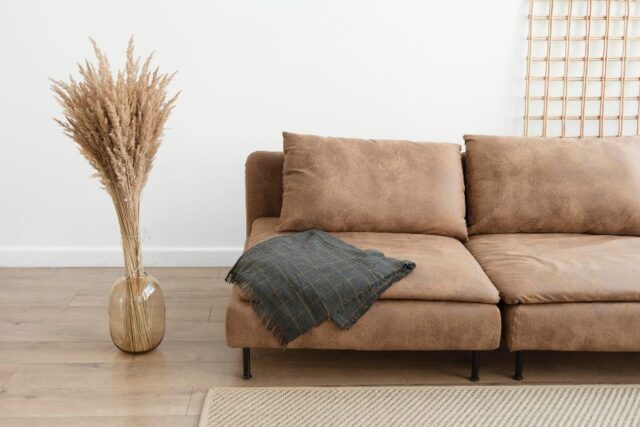Your living space has a significant impact on your mental health. The way you arrange, clean, and maintain your home can either uplift your mood or weigh you down. So, here’s how a well-maintained living space can create a positive atmosphere for your mental health – from decluttering to incorporating nature.
Declutter And Simplify
The first step towards a mentally healthy living space is decluttering. Clutter can be mentally exhausting, leading to stress and anxiety. Take a weekend to go through your belongings, and ask yourself: do you need that item, or is it just collecting dust? Of course, this also includes cleaning your home, and if you buy the right vacuum cleaner and cleaning tools, you’ll have a much better time doing so. By simplifying and cleaning your living environment, you free your mind from distractions and create a sense of spaciousness that can have a calming effect. And what’s best is that you’re also creating a healthier, germ and dust-free living space.
Natural Light And Air
Sunlight and fresh air are essential elements of a positive atmosphere. Natural light can improve your mood, boost your energy levels, and regulate your circadian rhythms. Open your curtains during the day, and let sunlight flood your home. Additionally, ensure good ventilation to keep the air fresh. The connection to the outside world through light and air can reduce feelings of confinement and enhance your mental well-being.
- Maximize Daylight: During the day, open your curtains and blinds wide to allow as much natural light as possible to stream into your rooms. Position furniture to take advantage of the sunlight, creating inviting spaces for reading, working, or relaxation.
- Window Treatment Choices: Consider light-filtering window treatments that let in ample light while providing privacy. Sheer curtains, light-colored blinds, or frosted glass can soften harsh sunlight and create a cozy, sunlit atmosphere.
- Ventilation and Air Quality: Ensure good ventilation by opening windows when weather permits. Consider using air purifiers to maintain clean, fresh air indoors. Adequate ventilation can help reduce indoor pollutants and promote a sense of vitality.
- Biophilic Design: Incorporate biophilic design elements like indoor gardens or large potted plants near windows to not only improve air quality but also create a harmonious connection between your interior and the outdoor world, reinforcing a sense of well-being.
Personalize With Purpose
Your living space should reflect your personality and values. Personalization can have a profound impact on your mental health, making you feel more connected and at ease in your surroundings. Decorate with purpose: display items that hold sentimental value or evoke positive memories. This personal touch can create a warm and welcoming atmosphere, making you feel more at home.
Embrace Nature Indoors
Bringing nature into your living space can provide numerous mental health benefits. Houseplants not only purify the air but also add a touch of greenery that’s visually soothing. Studies have shown that interaction with indoor plants can reduce stress and anxiety. If you don’t have a green thumb, opt for low-maintenance plants like snake plants or pothos. These green companions can help you find serenity in your home.
- Natural Materials: Choose furniture and decor made from natural materials like wood, bamboo, or rattan. These elements bring warmth and an earthy connection to your home.
- Natural Light: Maximize the use of natural light by strategically placing mirrors, selecting sheer curtains, or choosing light-colored wall paints. This creates a sense of openness and invites the outdoors in.
- Nature-Inspired Art: Decorate your walls with nature-inspired artwork, whether it’s landscapes, botanical prints, or photography of serene outdoor settings. These visuals can transport you to peaceful natural surroundings.
- Aromatherapy: Utilize essential oils and diffusers with scents like lavender, eucalyptus, or citrus to mimic the soothing fragrances of nature. These scents can evoke positive emotions and relaxation, contributing to a tranquil atmosphere.
Color Psychology And Mood
The colors you choose for your living space can have a significant impact on your mental state. Different colors can evoke various emotions. For instance, blue and green are often associated with calm and tranquility, while vibrant yellows and reds can stimulate energy and creativity. Consider the psychology of color when selecting paint, furniture, and décor. Find a color palette that resonates with your desired mood and use it to create an environment that enhances your mental well-being.
Organized Space, Organized Mind
An organized living space promotes an organized mind. A cluttered and chaotic environment can lead to feelings of overwhelm and stress. Take the time to establish practical storage solutions, such as shelves, bins, and drawers. Keep things in their designated places to reduce the mental burden of searching for misplaced items. When your space is well-organized, you’ll find it easier to focus on tasks, make decisions, and maintain a sense of control over your surroundings, all of which contribute to improved mental clarity and peace.
- Effective Storage Solutions: Invest in shelves, bins, and drawers to keep your belongings organized and easily accessible. This reduces the time and mental effort spent searching for items, allowing you to focus on more important tasks.
- Minimalist Approach: Embrace minimalism by prioritizing quality over quantity. Having fewer items can create a more serene and spacious atmosphere, reducing visual distractions and mental clutter.
- Task-Specific Zones: Create designated areas for different activities, such as a workspace, a relaxation corner, and a dining area. This segmentation helps your mind transition from one task to another more smoothly.
Mindful Technology Use
While modern tech has many advantages, excessive screen time and digital clutter can negatively impact your mental health. Create a designated area for your electronic devices, such as a charging station. Implement mindful technology use by setting boundaries for screen time, especially in the bedroom. This helps you disconnect and maintain a healthier balance between your online and offline life, reducing the stress and anxiety often associated with constant digital engagement.
Your living space is a canvas where you can paint a picture of your mental well-being. From color choices that influence your mood to the benefits of an organized space and mindful technology use, your home can either elevate or diminish your mental health. By taking these steps to create a harmonious and well-maintained living space, you’re not just crafting an attractive environment – you’re nurturing your mental health, finding solace in your surroundings, and fostering a positive atmosphere that supports your overall well-being.














